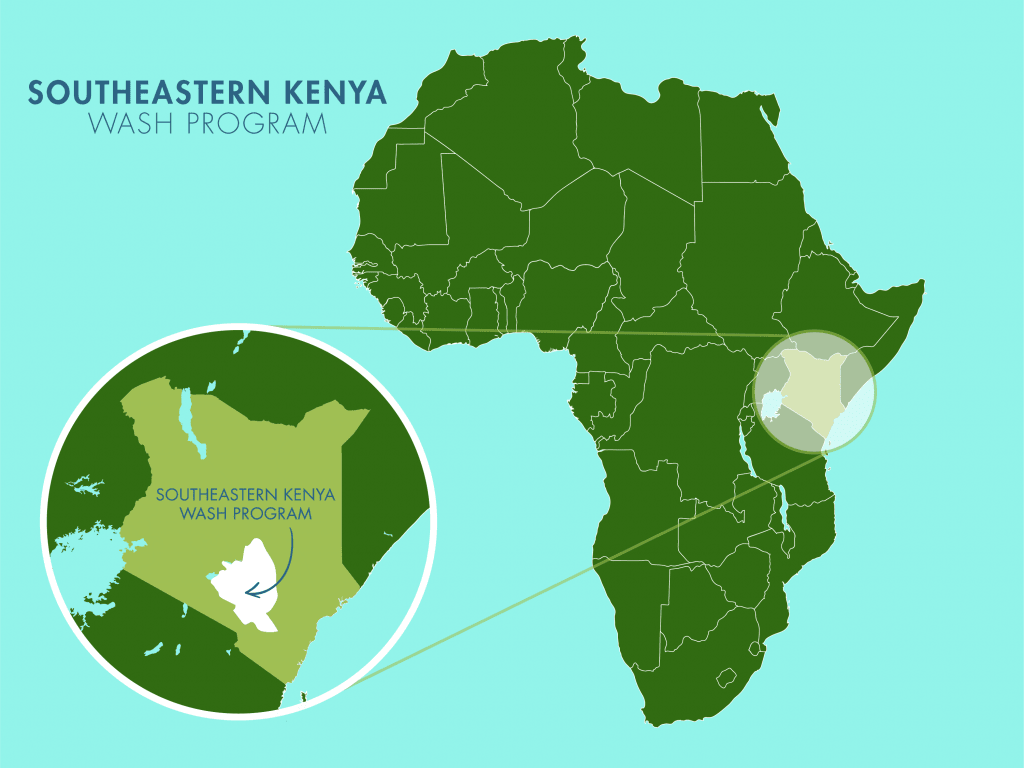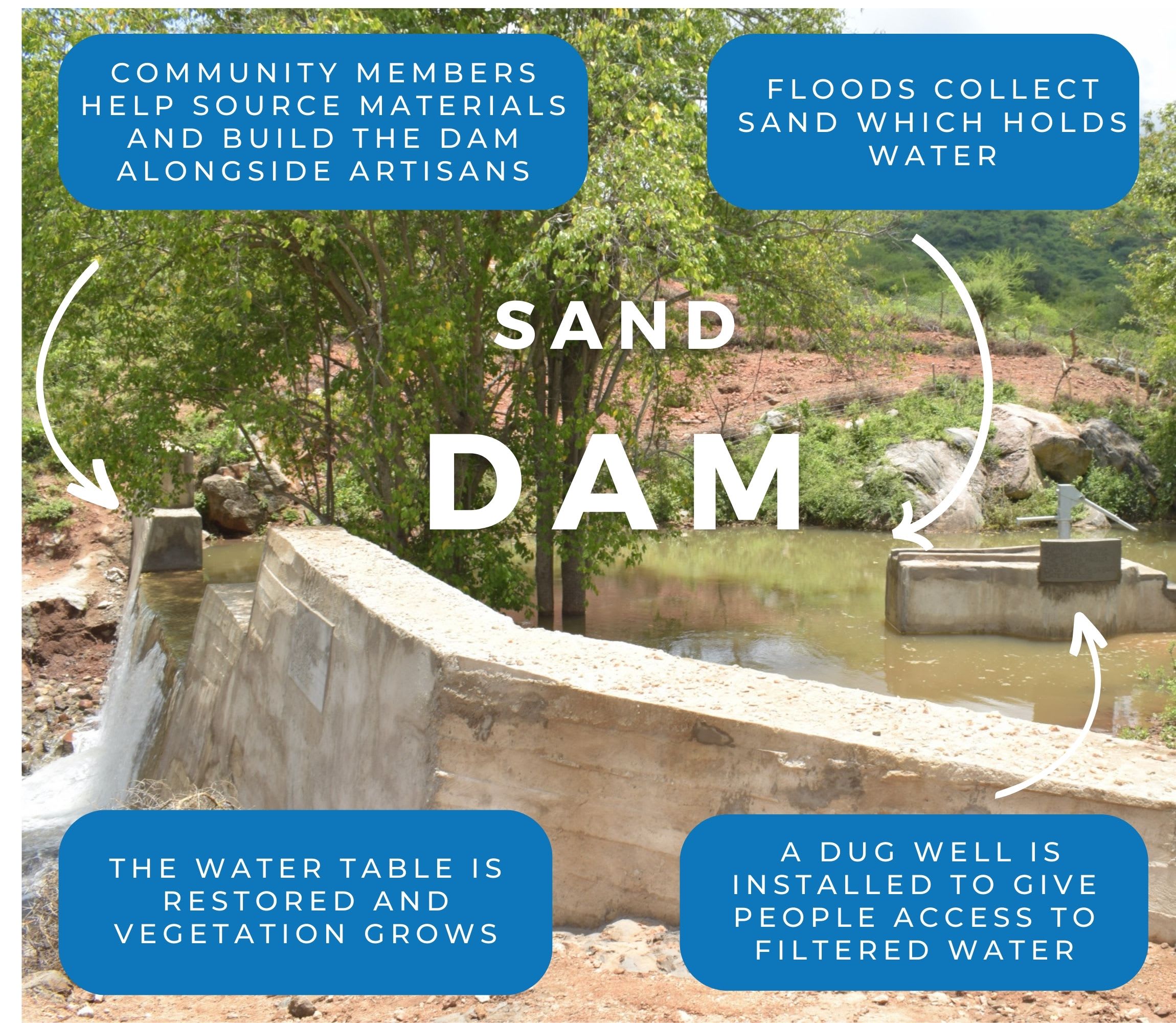Boniface Munyasya, a 64-year-old farmer in the Kamutekeo West Twone Mbee Community, is one of 800 residents who face a daily struggle to access enough water.
The only reliable source is a distant dug well, requiring over two hours for a round trip. The long and tiring journey makes it difficult, especially for older community members like Boniface.

The alternative — a nearby scoop hole — often causes more problems than it solves.
Boniface shared, "It is common to have water-related infections in our village. For instance, I developed a stomachache almost a month ago, which forced me to stay at home as one of my sons went to purchase drugs from our local dispensary. It was a difficult moment, but we have no way of avoiding it because most times during the drought period, I depend on water from the scoop hole."

Boniface (right) collects water from a scoop hole.
The consequences go beyond health. Medical treatment is costly for families who already struggle to meet their basic needs.
"Sometimes, I have to go to the dispensary by motorcycle to be diagnosed and get treatment, which is costly given my small income. I depend on income from farming or livestock produce, but it is negatively affected by the rampant drought in our area," Boniface commented.
The community’s water crisis continues to take a heavy toll.
"It is heartbreaking that we have to encounter water-related infections, and [we] hope [to] have better alternatives for clean water, but we have very few. Although we implemented a shallow well last year, it is still far from my home; thus, my wife often goes to fetch water from the scoop hole," Boniface continued.

Constructing a sand dam nearby will empower Boniface to nurture his family and farm with ease! He can focus on thriving without the stress of illness or spending precious resources on medical expenses—what a wonderful opportunity for growth.
Solving the water crisis in this community will require a multifaceted system that will work together to create a sustainable water source that will serve this community for years to come.
Steps Toward a Solution
Our technical experts worked with the local community to identify the most effective solution to their water crisis. Together, they decided to construct a sand dam and a protected dug well.
Sand Dam
Sand dams are sought-after, climate-smart, and lasting water solutions providing hope and resilience to communities in arid Southeastern Kenya. Think of them like giant sandboxes constructed in seasonal rivers that would typically quickly dry up after the rainy season. Instead of holding water like traditional dams, they collect sand and silt.
When infrequent rains do come, these dams catch a percentage of the river's flow, letting most of the water continue downstream to other communities. But here's the magic: the sand they collect acts like a natural filter, holding onto water long after the river's gone dry. Then, wells are constructed nearby, creating a reliable water source even during the driest times.
And the benefits don't stop there! In communities impacted by climate change, sand dams replenish groundwater and prevent soil erosion. Even during severe droughts, the consistent water supply from these sand dams allows farmers to thrive, giving way for enough food not only for their families but also to sell in local markets.
The most remarkable aspect of sand dams is how they involve the local community every step of the way, giving them a sense of ownership and pride in solving their own water shortage and managing their own water resources.
This sand dam will be connected to a protected dug well to make the water more accessible.
Community Education & Ownership
Hygiene and sanitation training are integral to our water projects. Training is tailored to each community's specific needs and includes key topics such as proper water handling, improved hygiene practices, disease transmission prevention, and care of the new water point. Safe water and improved hygiene habits foster a healthier future for everyone in the community.
Encouraged and supported by our team's guidance, the community elects a water user committee representative of its diverse members. This committee assumes responsibility for maintaining the water point, organizing community efforts, and gathering fees to ensure its upkeep.

 Sand Dam
Sand Dam
 Rehabilitation Project
Rehabilitation Project


















